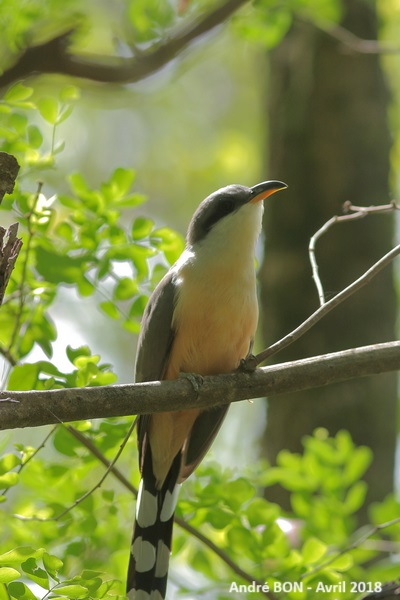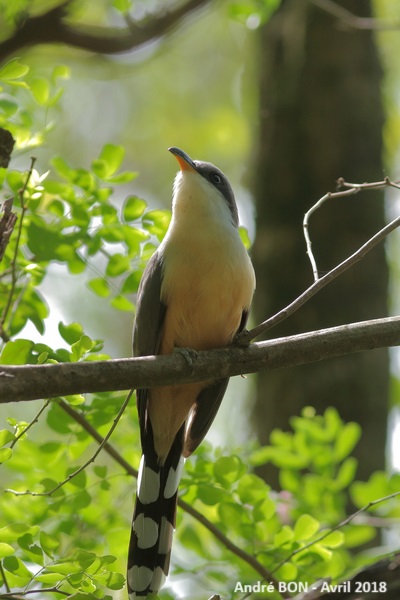

| Mangrove Cuckoo (Coccyzus minor (Gmelin, 1788)) |


|
|
Scientific name: Coccyzus minor (Gmelin, 1788) Common name: Mangrove Cuckoo French name: Coulicou manioc Order: Cuculiformes Family: Cuculidae Size: Body size: 28 to 34 cm; Weight: 64 to 102 g; Wingspan: 38 to 43 cm. Habitat: Mangroves, estuaries, thickets and rainforests near water. Food: Insectivorous, caterpillars, grasshoppers and other insects. The diet can be supplemented with spiders, lizards, snails and some berries. Nesting: Mangrove Cuckoos are not parasitic birds. The nest is a platform of branches and twigs placed on a low fork in a tree. There is a clutch of 2 to 3 eggs between March and October depending on the region. Migration: Sedentary. Geographic area: South Florida, West Indies, Atlantic and Pacific coasts of Mexico and Central America, Atlantic coast of northern South America south to the mouth of the Amazon. |
The Mangrove Cuckoo has greyish brown upperparts. The eyes, outlined in yellow, are covered by a large black mask. The underparts are buff or whitish in colour. The underside of the long tail is black with large white oval spots. The bill is black and curved with yellow on the lower mandible. |
| [To know more about the Mangrove Cuckoo] [Next picture] [Top] |

|
This Mangrove Cuckoo, observed on the Caravelle peninsula, gave me the opportunity to shoot several pictures. And as a beginner I don't have any where the tail is not cut! |
| [To know more about the Mangrove Cuckoo] [Previous picture] [Top] |

|
You can almost see the tip of the tail but this could still be better. |